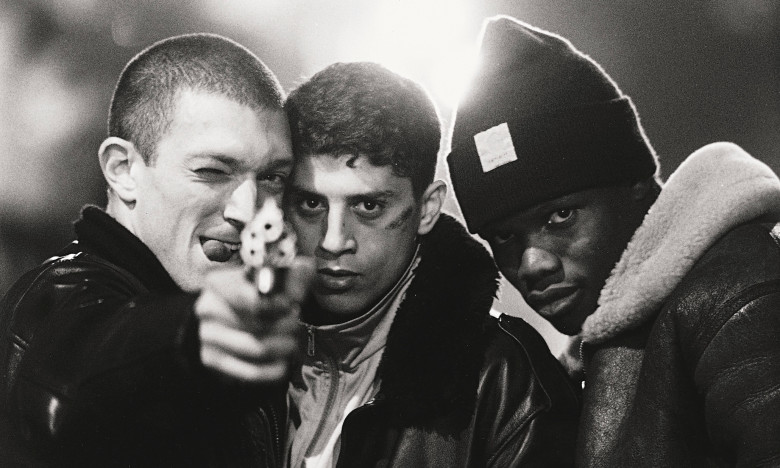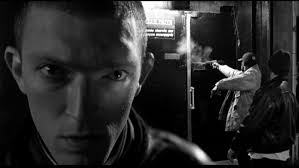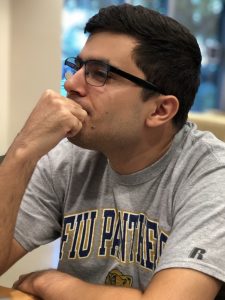
On April 6, 1993, a seventeen-year-old Zairian immigrant, Makome M’Bowole, was killed while unarmed and handcuffed to a radiator in police custody in Paris, France. What the French police would go on to call an “accident” became another incident in a widespread problem in France at the time, where over three hundred detained and unarmed people had been killed in police custody since the early 80s. Riots were commonplace after these killings in the communities of the victims, which were impoverished and comprised of racial and ethnic minorities as well as immigrants.
That same day, a twenty-six-year-old filmmaker, Matthieu Kassovitz, began writing the script for what would become La Haine (Hate) (1995). La Haine’s brazen take on police brutality, violence, and life in the French ghettos would elicit polar reactions throughout the country. At its premiere during the 1995 Cannes Film Festival, La Haine would receive both a standing ovation from the audience and a protest from the police at the festival.
La Haine follows three young friends from immigrant families in the banlieues, which are impoverished French housing projects, the day after a riot which broke out after a young North African immigrant, Abdel, has been beaten into a coma by police. Hubert (Hubert Koundé) is an Afro-French boxer who’s boxing gym was burned down in the riots. The most reflective of the group, Hubert longs to get out of the banlieues and escape the poverty and violence around him. Vinz (Vincent Cassel) a Jewish-French aspiring gangster fantasizes of killing a police officer and earning the respect of his peers in the projects. Exasperating these desires is the fact that Vinz has found the gun that a police officer lost in the riots. Said (Saïd Taghmaoui) an Arab Maghrebi floats between the two philosophies of his friends, at times encouraging Vinz to kill and at others showing more thoughtful reactions to the situation.

The nature of La Haine’s subject matter and occasional realistic filmmaking approach has led some viewers to describe the film as having a documentary feel. However, one of the treasures of La Haine is the way it delivers its social commentary through highly stylized visuals. In the later half of the film, the trio have made their way to the city of Paris. Vinz, who has been separated from his Hubert and Said, runs into some other guys from the banlieues and they ride out to a local club. When Vinz and his buddies are turned away at the door, one of the men becomes enraged, goes on a racist tirade against the bouncer, and pulls out his flare gun. Here is an example where La Haine’s striking visual style shines. As the man approaches the door, a wide shot captures the scene outside of the club and when he pulls out the flare gun, a close-up of Vinz’s face becomes superimposed on the left side of the screen. Up to this point, Vinz, who is still carrying the gun he found in the riots, has been wrestling with the idea of actually killing a police officer has he has proclaimed to his friends. The man lets out two shots straight through the peephole hitting the bouncer directly. The choice to superimpose Vinz face as all this happens allows us to see his reaction in real time as he jumps at the gunfire and looks on in utter horror. Here Vinz is directly confronted with the reality of the violence he fantasizes about and through this unorthodox visual technique the power of Vinz’s realization is intensified as the audience sees his reaction to the violence as it happens.
La Haine’s message remains relevant today amidst the prevalence of police brutality but the same can be said of many films. What keeps this gritty feature debut feeling new is its filmmaking. FIU students can see La Haine for free at Kanopy.com.

Jose Ramirez is an English major minoring in Psychology and working towards a Film Studies Certificate.
